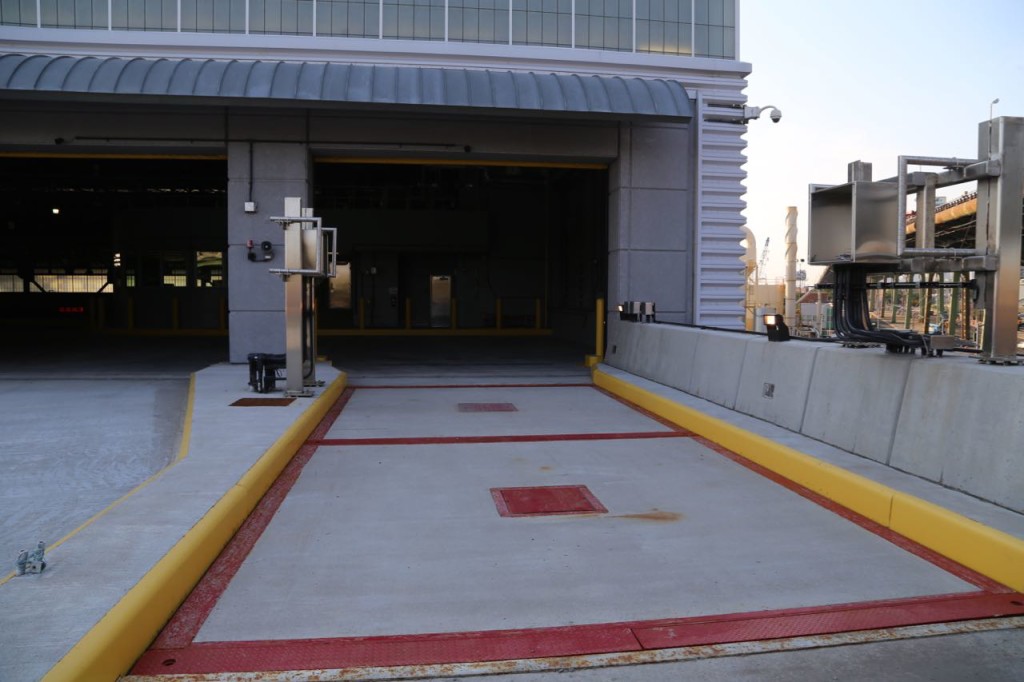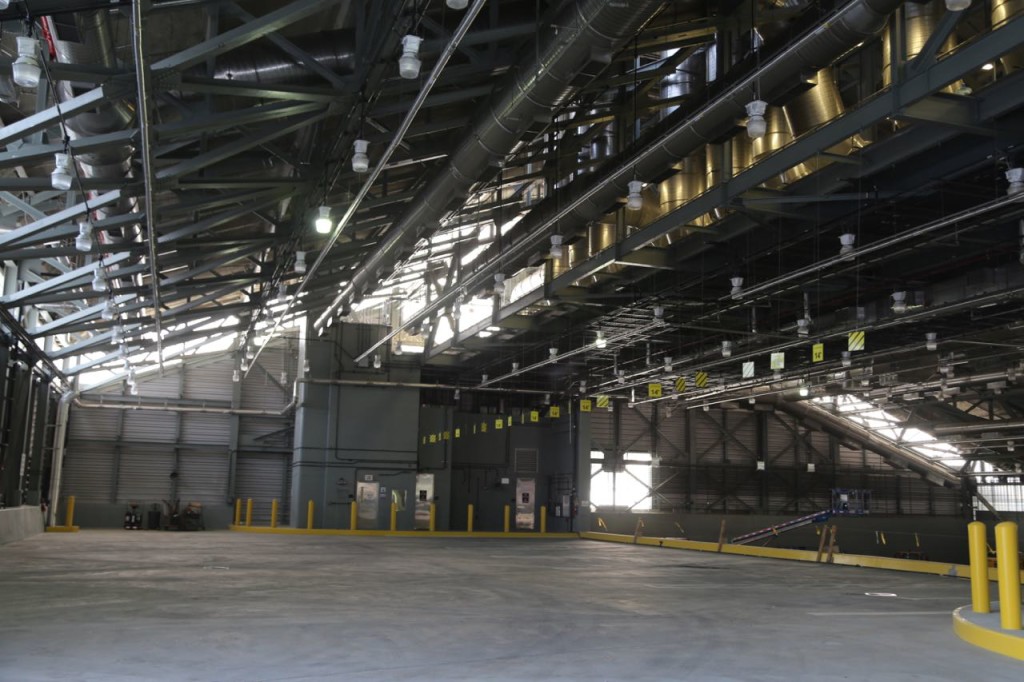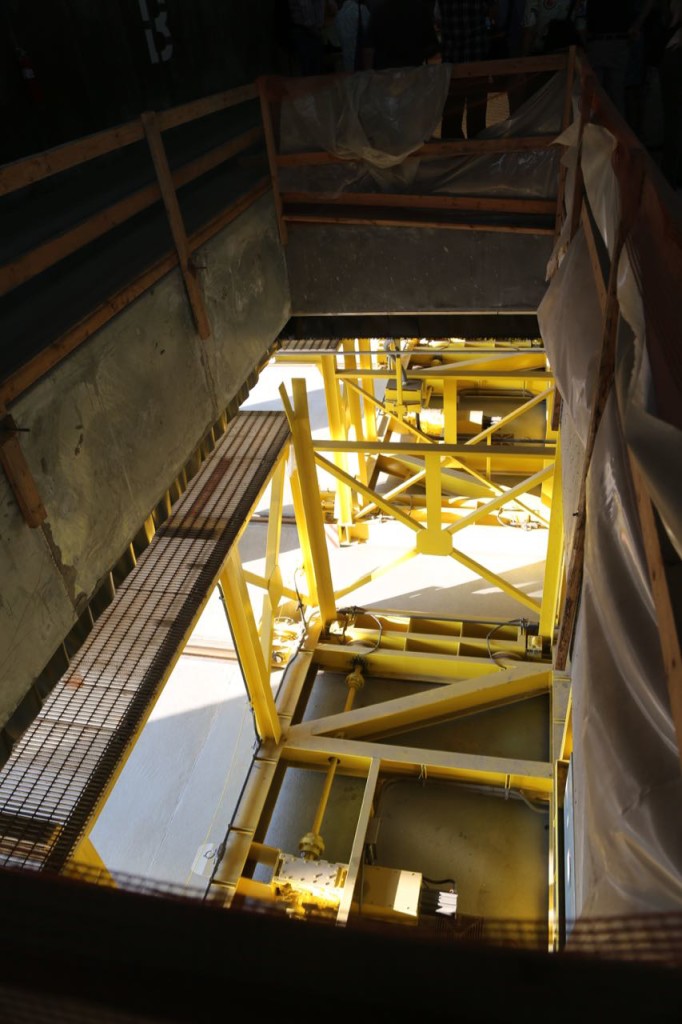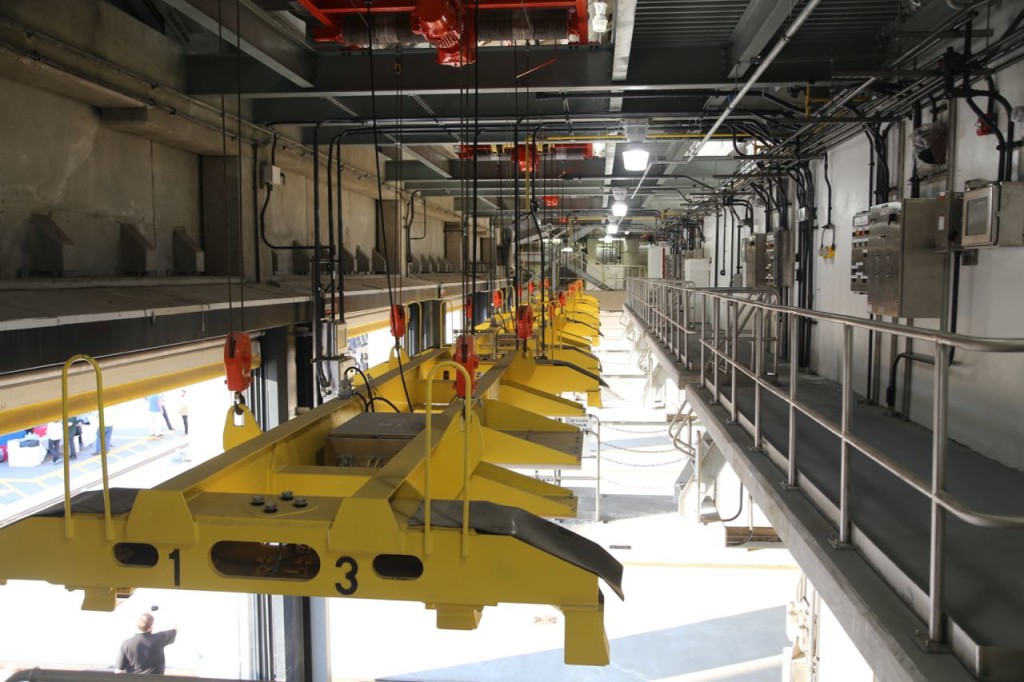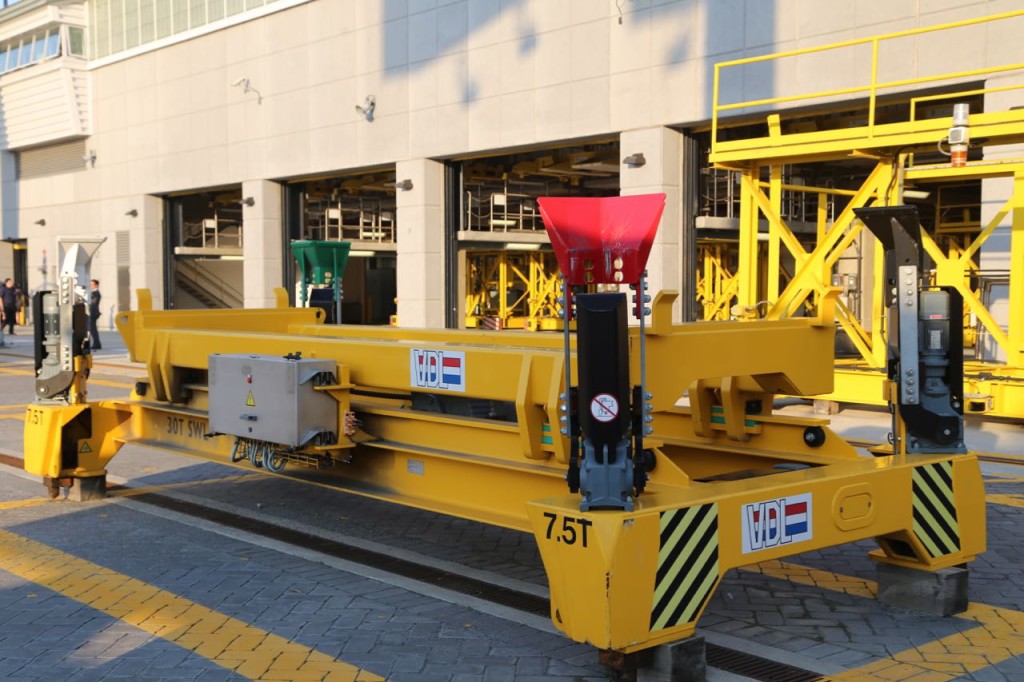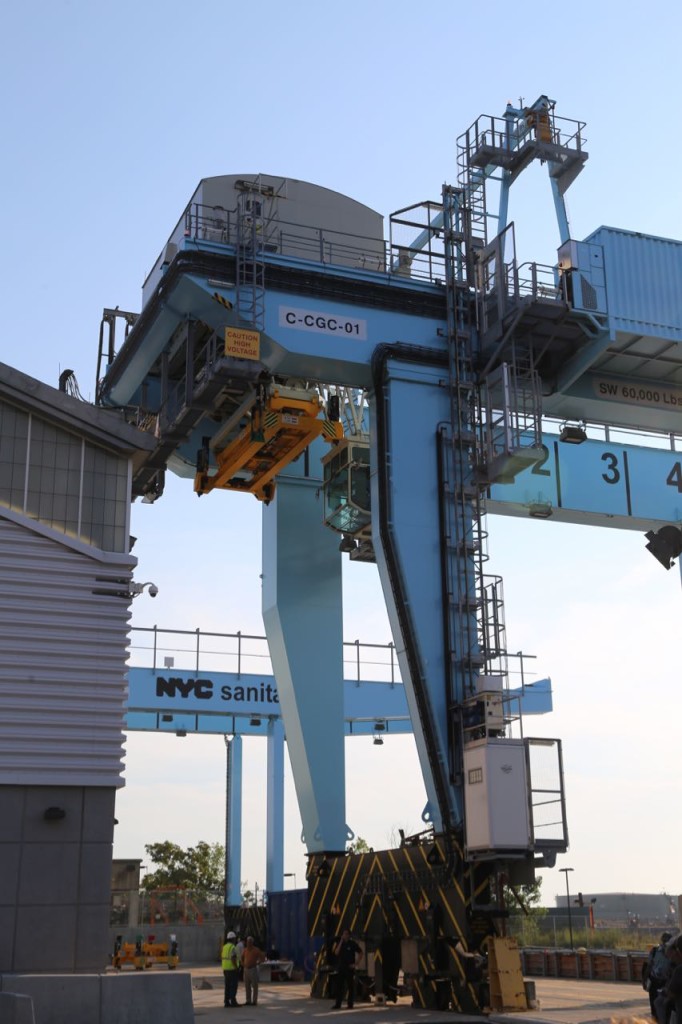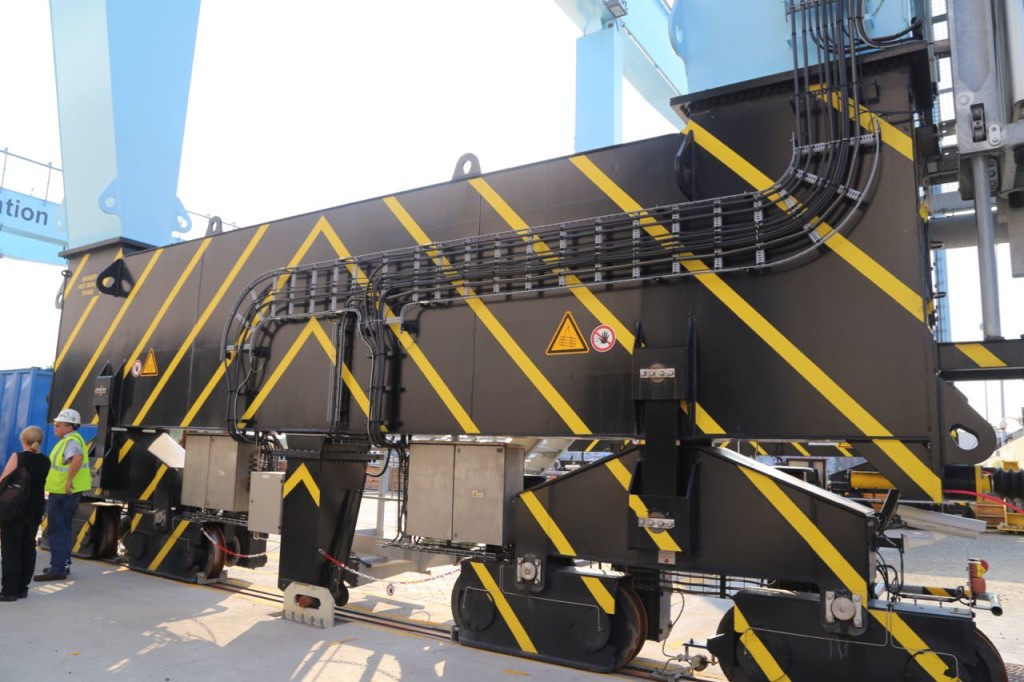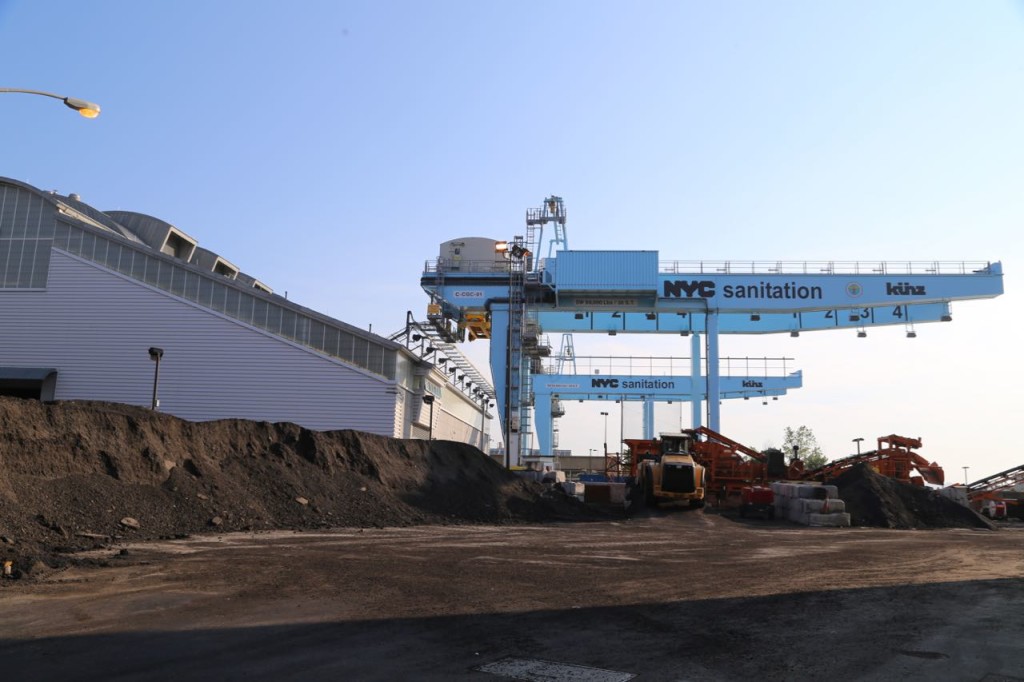I got the chance to tour New York City’s brand new Hamilton Avenue Marine Transfer Station. It is scheduled to open next year and is located on the Gowanus Canal in Brooklyn. It will be the transfer point for household waste from ten Brooklyn community boards. It is the first marine transfer station there. All other waste is moved on trucks and rail. It is very impressive. Once operational, it will operate 24 hours a day and six days a week (no Sundays). Currently waste from the area goes to waste to energy incinerators. There will be 12 sanitation workers per shift plus one supervisor.
Trucks enter the building and are first weighed on a scale.
Once inside the building, the trucks back up to the edge of the floor and lower their trash onto the mixing floor below.
Front loaders and other equipment on the floor below are used to push the waste through openings in the floor into containers waiting below the mixing floor.
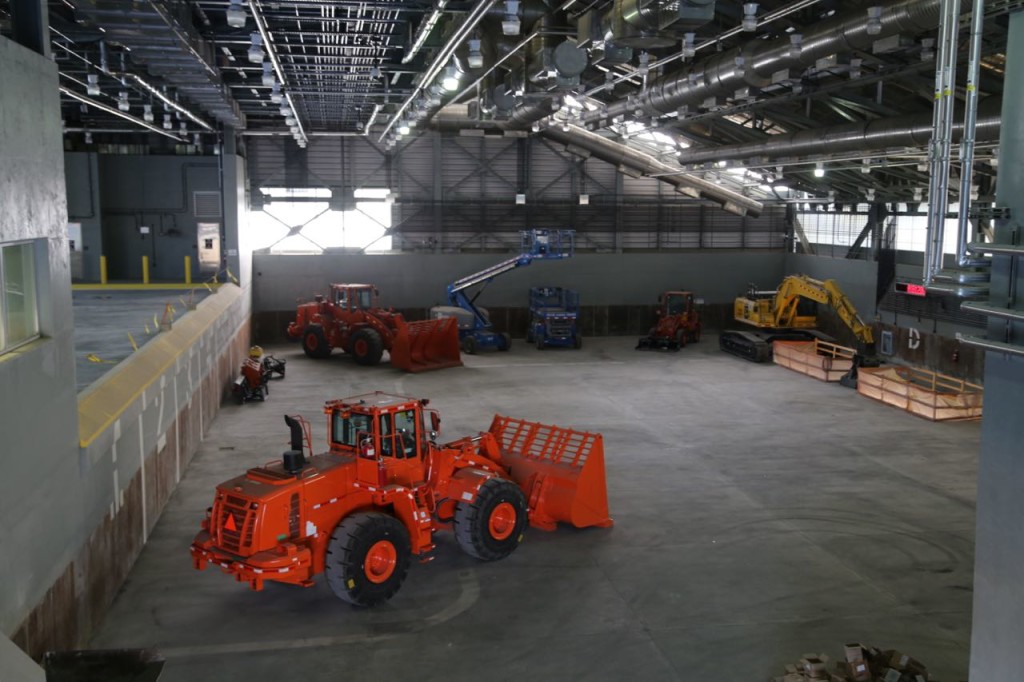
Waste mixing floor with equipment to push waste into containers, the elevated floor on the left is where the trucks will lower their loads
The openings in the mixing floor are only as big as the standard containers that will accept the waste. The station aims to put 20 tons of waste in each container.
Once the container is full, equipment is then used to place a top on the waste container.
The containers are moved the loading area to the topping area to the storage area on rails.
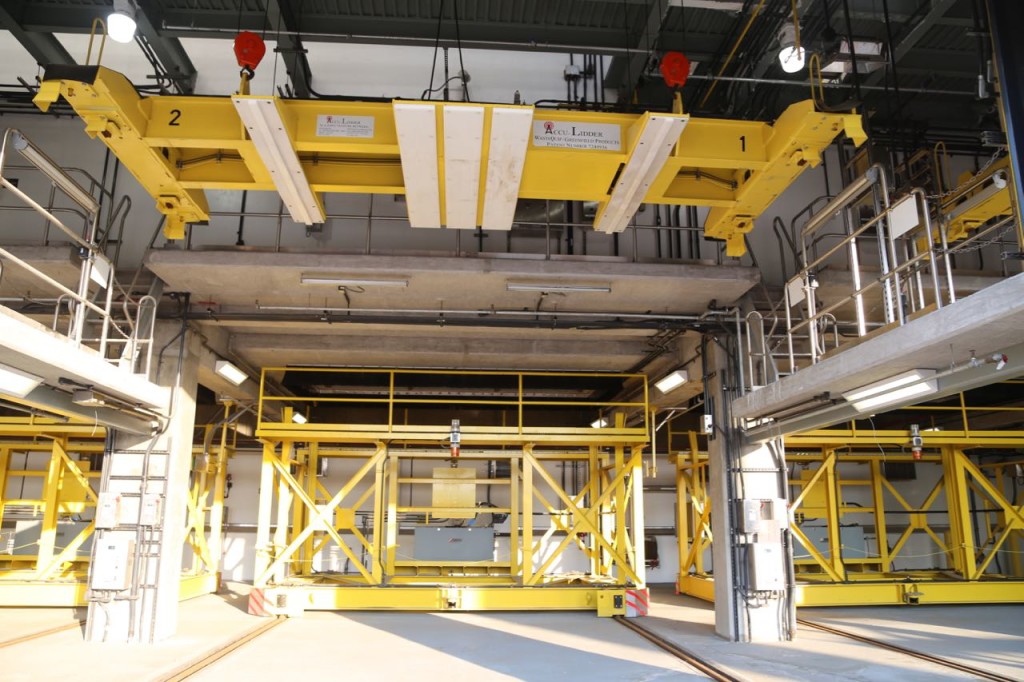
Loading bay, in foreground are toppers and behind, with yellow frames, are where containers will sit to receive waste
Cranes that are also on rails are used to move the containers from the building to stacking areas to finally the barge.
There are two cranes, but for safety, only one is used at a time. The other one is a backup during maintenance.

